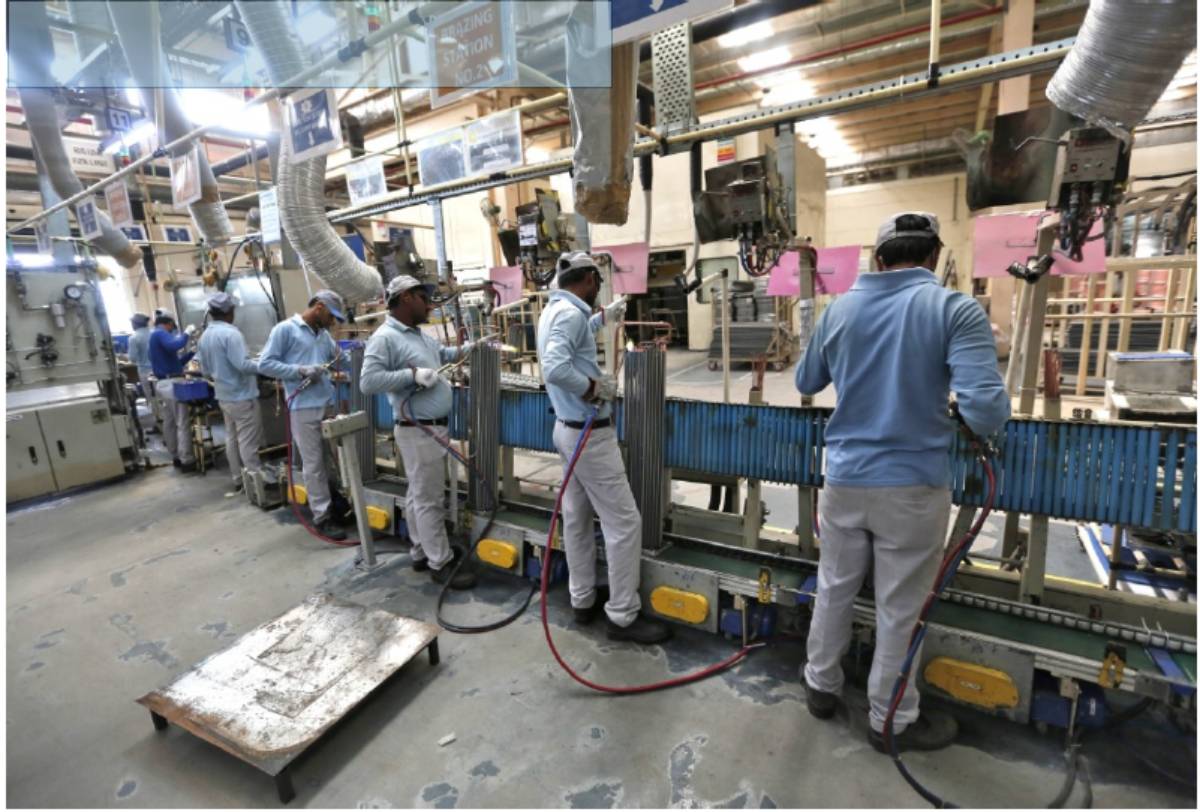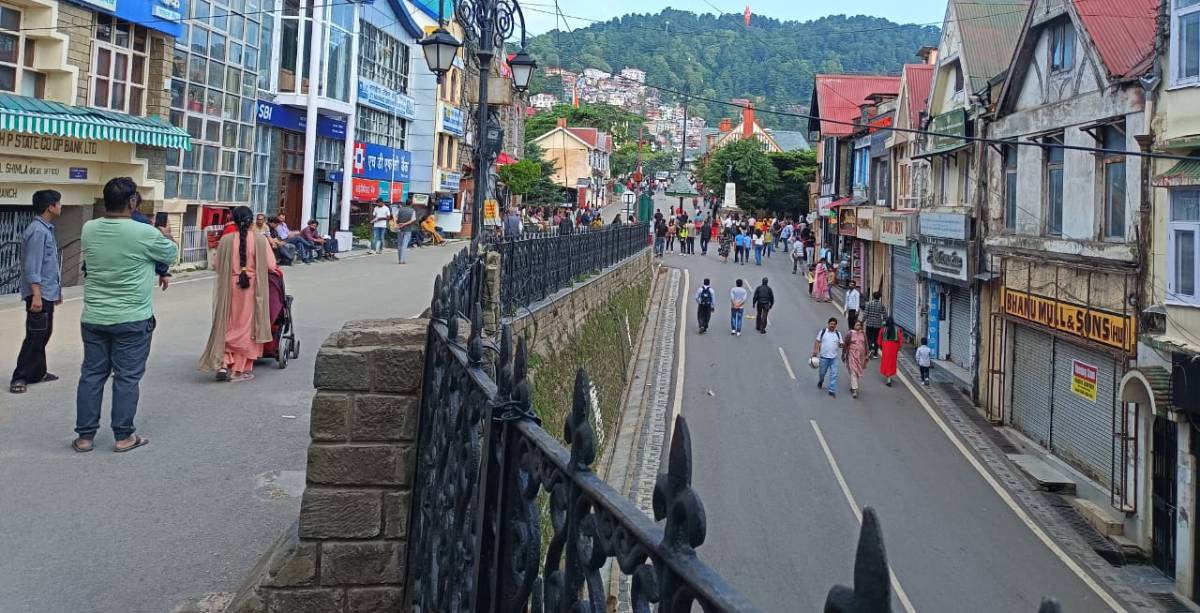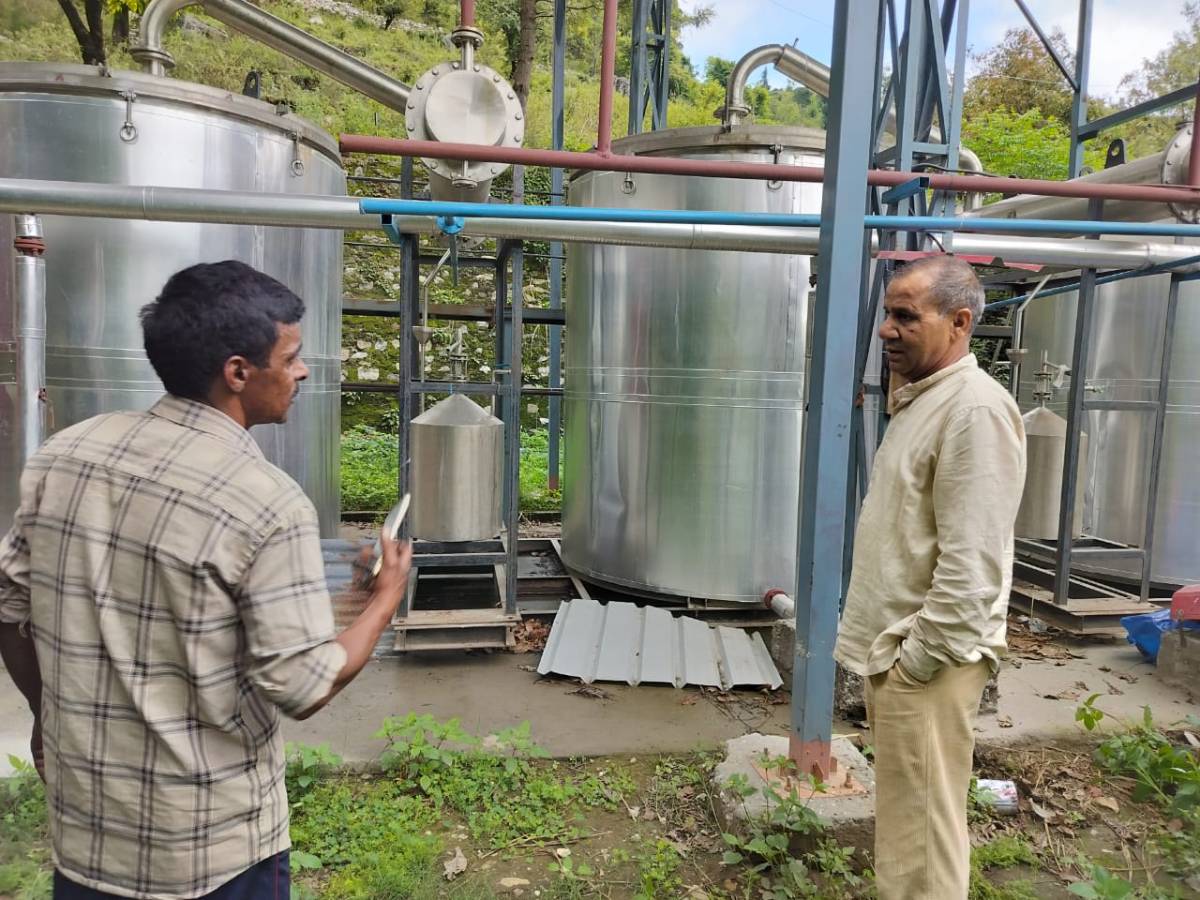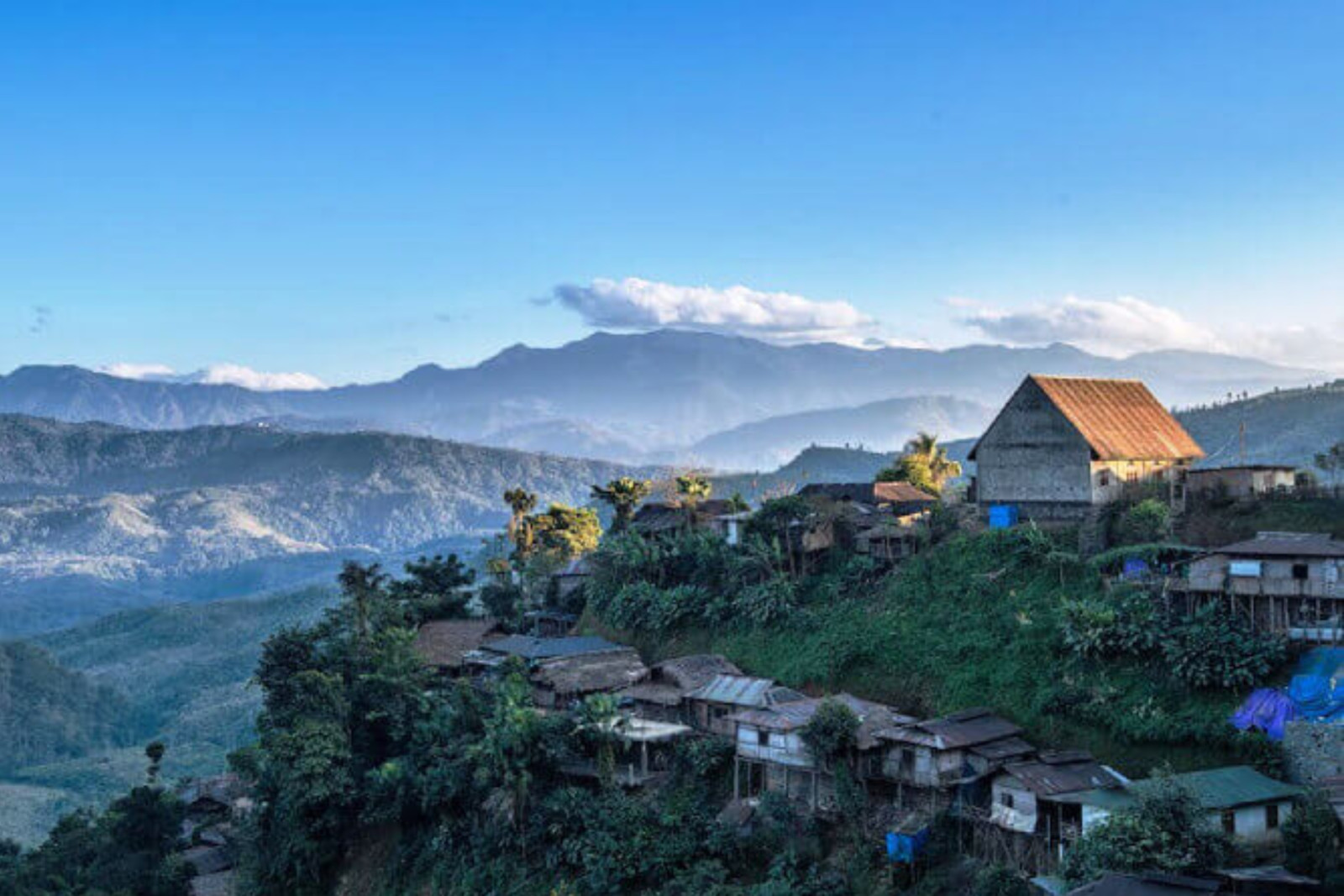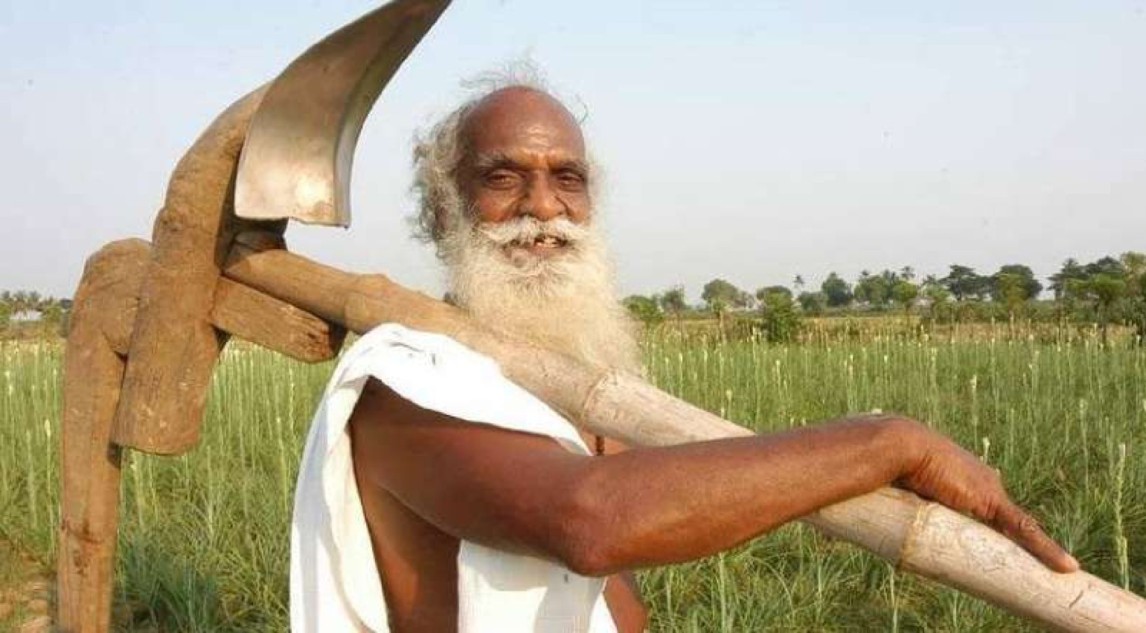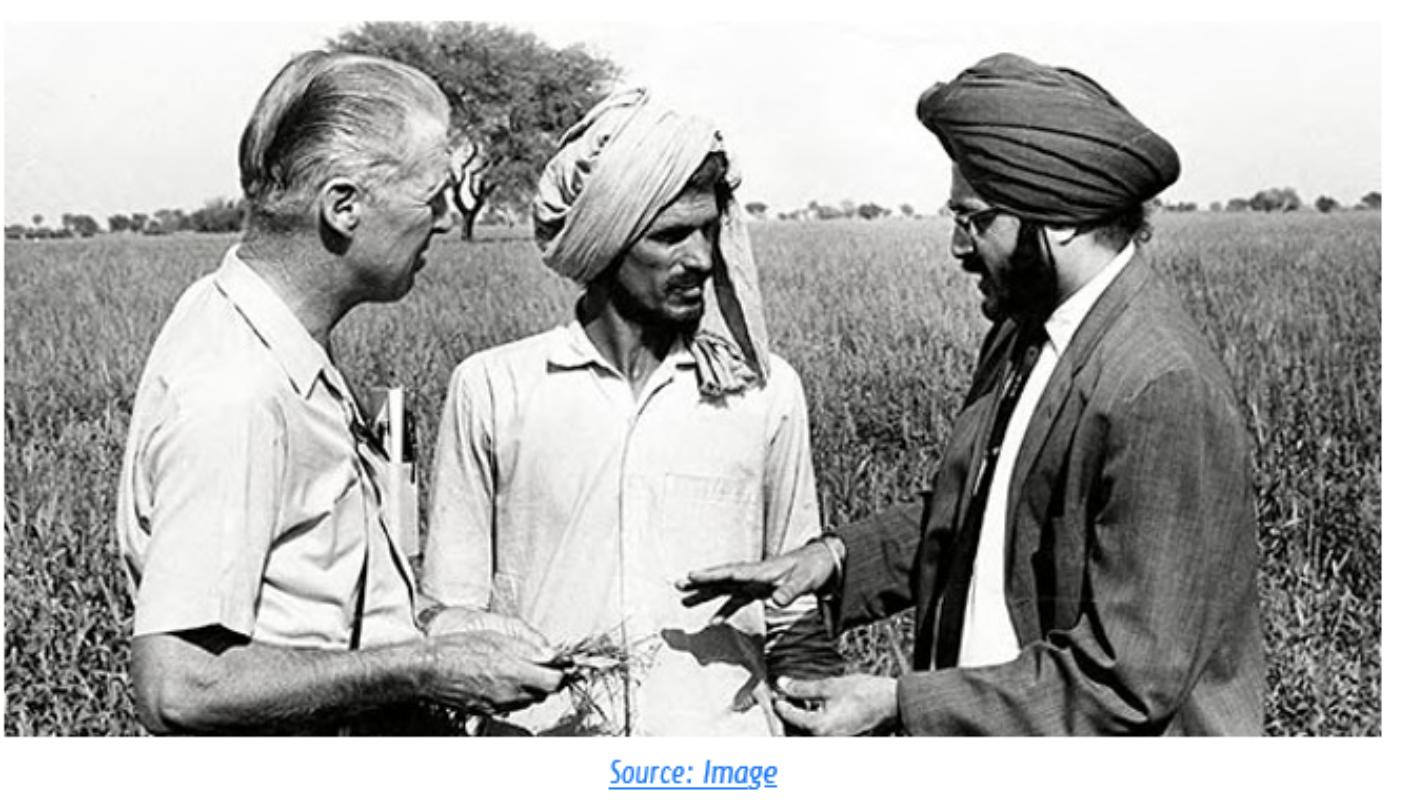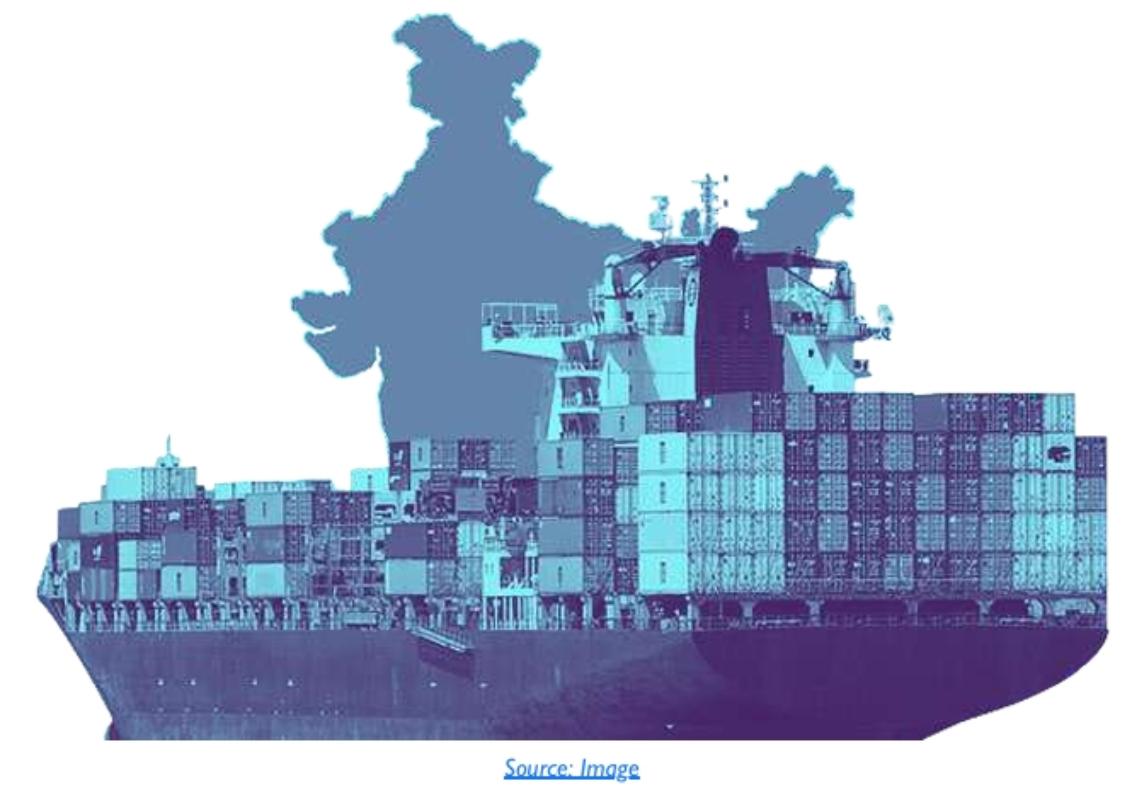Executive Summary
- Rajasthan is undergoing jobless growth. Few jobs are being generated compared to the demand for employment. This situation is unsustainable and dangerous.
- In order to achieve full employment over the next five years, the challenge for public policy is to create conditions for the generation of 41 lakh jobs. This document is an effort to think how these jobs might be created.
- We find that jobs can be created in the areas of natural resource regeneration, urban infrastructure, and solar energy. Jobs can also be created through daycare subsidies for working mothers, and by filling up vacant positions in the state government.
- Land as well as water and forests in Rajasthan suer from degradation and ecological stress. This degradation can be countered by a large-scale public program to restore those natural resources. This can create about 20 lakh new jobs over the next five years.
- Rajasthan requires many more small towns and dynamic rural areas. The creation of roads, bridges, buildings, and houses in these towns and villages can generate 15 lakh jobs for unskilled, semi-skilled, and skilled labourers.
- Rajasthan is very well positioned in the area of solar energy. A focus on growth and employment in this area can generate up to 7 lakh jobs, spread over all phases—manufacturing, installation, and maintenance.
- The female labour participation in Rajasthan is extremely low. We suggest a daycare voucher scheme for working mothers. This will enable many more women to continue working even after childbirth.
- There are about one lakh vacancies in the state government in Rajasthan, including positions such as school teachers and policemen. Filling these jobs not only provides high quality employment, but also facilitates better public service delivery.
- In addition to these new initiatives, Rajasthan should continue to promote its economic growth through investments in skilling, infrastructure, and public services.
- In agriculture, policy should encourage shifting to crops that lend themselves to value addition, as well as investment in complementary industries such as agri-warehousing and food processing. Initiatives to discourage over-irrigation can help to prevent water-logging. This can raise employment in farming, and also reduce the power subsidy.
- Premature de-industrialisation is taking place in Rajasthan. Attracting investments and know-how from relatively new sources (such as China), more effective plug-and-play industrial facilities, and enabling safe skilling and housing for workers, can help Rajasthan create many new manufacturing jobs.
- Rajasthan needs to go beyond its traditional tourist audience and target new markets, such as sightseeing tourists from east Asia. Rajasthan should also go beyond just sightseeing, and offer unique experience-based tourism to high-spending Indian tourists.
Context
Rajasthan is the largest state in the country, with an area of 342 thousand square kilometers, accounting for over 10% of India’s total area. About 75 million people, around 5.5% of the national population, live in the state. Roughly 75% live in rural areas. The per capita income is just above Rs 1,00,000, which is lower than the national average.1
Jobless growth
Rajasthan has grown at a low-to-moderate rate during the last two decades (1994–2015). The state Gross State Value Added (GSVA) growth over this period was 4.9%. This performance is slightly worse than the all-India growth rate of 5.2% over this same period.2
During this period, the increase in employment has not been commensurate. The unemployment rate is as high as 10.6%, and about 32 lakh people need employment.3 This labour force will continue to grow, adding another 23 lakh persons seeking employment in the ve years from 2019 to 2024. This is set against a background where the current growth model is creating practically very few new jobs. We estimate that the “business as usual” growth will not create more than 15 lakh jobs. The remaining 41 lakh people will be unemployed.
This employment situation is unsustainable and dangerous. Any policy attempts to improve this situation can succeed only if it pays attention to the unique characteristics of Rajasthan—its advantages and its limitations.
Female labour participation
The female Labour Force Participation Rate (LFPR) in India is quite low, at 11.1%. This number is generally lower in Rajasthan.4
Only 27.4% women are in the workforce, as compared to 75.5% men in 2015–16.
Part of the reason for such low LFPR could be social and cultural factors acting against women’s employment. Another reason could be the possibility that persistently high unemployment disheartens job-seekers and causes them to retire from the labour force.
Demographic dividend
According to United Nations Population Fund, the demographic dividend is the economic growth potential that can result from shifts in a population’s age structure, mainly when the share of the working-age population (15 to 64) is larger than the non-working-age share of the population (14 and younger, and 65 and older).5 With fewer dependents, and the largest section of the population in the working age, it is possible to generate more incomes, more savings, more capital per worker, and more growth.
The demographic dividend will manifest in different states at different times, depending on their population trends. In Rajasthan, while the dependency ratio is already decreasing, the demographic dividend window will be fully available during the 2040–2050 decade.6 The state needs to act now to be able to utilise this window fully.
Location
Rajasthan has an advantageous geographical location. It touches six major states of India: Delhi, Haryana, Punjab, Uttar Pradesh, Madhya Pradesh, and Gujarat.
It is connected by good roads to ports in Maharashtra and Gujarat. Nearly 39% of the Dedicated Freight Corridor (DFC) passes through Rajasthan. About 60% of the area of the state falls within the Delhi-Mumbai Industrial Corridor Project (DMIC) project influence area. The corridor will make Rajasthan easily accessible to western and northern markets.
Land
Rajasthan is geographically the largest state of India, with over 10% of the total area of the country. Its population density is just about half that of the national average. Consequently, land is available in plenty. The government, through Rajasthan Industrial Development and Investment Corporation Ltd (RIICO), attempts to ensure adequate land and infrastructure support for enterprises.
Investor perception
Rajasthan does well in terms of investors’ perceptions. Based on the National Council of Applied Economic Research (NCAER) State Investment Potential Index, which looks at 51 sub-indicators and a perception survey to provide a single composite score, Rajasthan ranks 11th among Indian states in investment potential.7
Policy challenge
If we are aiming at full employment, the policy challenge is to create a total of 41 lakh jobs over the next 5 years.
This document is an effort to think how these jobs might be created, in what sectors of the economy can these jobs be created. We try to answer questions like: What policies can encourage employment? What investments will be required? How can the resources be found?
Many well-known suggestions have been made to improve the employment situation in India and in Rajasthan. They include investments in skilling, infrastructure, urbanisation, promotion of tourism, food processing, labour reforms, etc. They continue to be valid and important suggestions, and various policy initiatives have already been launched along these lines. In this document, we make a preliminary effort to identify policy directions which can deliver large increases in employment while creating significant public value as well.
In the remainder of this paper, we first examine the conventional three sectors in more detail—agriculture, industry, and services. We also look at the cross-cutting sector of energy and natural resources. We then present proposals for increasing large-scale employment, and examine its fiscal implications.
Agriculture
Agriculture employs 41% of Rajasthan’s labour force. However, its share of GSVA has come down from 28.6% in 2011–12 to 24.6% in 2017–18, a sharp decline in a short period.8 Clearly the average Rajasthani farmer is less productive than the average Rajasthani non-farmer. However, while Rajasthani farmers make up only 4.7% of all the farmers in the country, they contribute 8% of the total national agriculture output. So the Rajasthani farmer is more productive that the average Indian farmer.
During the period from 2011–12 to 2017–18, Rajasthan’s GSVA grew at 6.0%. Compared to this overall growth, the agricultural sector in Rajasthan grew relatively anemically, at a rate of 3.4%. During this time, Indian agriculture grew at a rate of only 2.8%.9 Thus agricultural growth in Rajasthan has been faster than in the rest of the country.
The growth in agriculture has been due to crop diversification, the use of drought resistant varieties, and due to growth in the livestock sector.10
Diverse crops
Rajasthan is blessed with as many as ten different agro-climatic zones.11 This enables it to cultivate a variety of crops. The state is a major producer of wheat, barley, pulses, sorghum, bajra, and rice. The state is also one of the largest producers of guar, coriander, cumin, fenugreek, fennel, mustard, oil seeds, soybean, gram and moth bean.12
Livestock
Rajasthan has one of the highest livestock populations in the country. It produces 10% of India’s milk and a third of sheep and goat. It also produces the largest amount of wool in the country.13
Animal husbandry is an important source of nutrition. In addition, livestock activities are especially important in generating employment for women, landless laborers, and small and marginal farmers. The large arid and semi-arid regions of the state are well-suited for rearing small ruminants, offering a major opportunity for employment and growth by tapping into the rapidly growing demand for meat in India.14
Livestock income is relatively stable. Thus it can act as an insurance against crop and drought risks, making farm incomes more resilient.
Agricultural marketing
Rajasthan has 134 main markets (Mandi) and 308 sub-market yards. Many marketing reforms have already been adopted. The Rajasthan Agricultural Produce Market Act, 1961 has been amended to permit contract farming for fruits, vegetables, medicine plants or aromatic plants. Direct purchase from the farmers without going to the market yards has been allowed. This will reduce the number of market intermediaries, ensure remunerative prices to the producers, and encourage the setting up of agro-processing enterprises. Private consumer-farmer markets are now allowed, where a farmer may sell his produce directly to the consumer. The market fee on fruits and vegetables has been exempted.15
Strategy for Agricultural jobs
Rajasthan has many advantages, including its crop diversity, its location, and its agri-marketing reforms. These should be leveraged to generate growth and employment.
Government policy should encourage shifting to crops that lend themselves to value addition. Policy should also encourage investment in complementary industries such as food-processing and agri-warehousing.
Rajasthan should aim to reduce its dependency on water intensive crops, and continue the transition to other crops such as guar, barley, pearl millet, and spices.16
Initiatives to encourage proper use of water can help to prevent water-logging, thereby raising employment in farming, as well as reducing the power subsidy. This incentive could take the form of a Direct Benet Transfer (DBT) to the farmer instead of providing free electricity.
However, it should be noted that even with these reforms, growth in agriculture may not create a large number of new jobs in this sector, due to the extensive disguised unemployment that already exists. Growth in this sector may end up creating significant employment in the non-farm sector due to increased demand for goods and services.17
Industries
Industries, consisting of mining and quarrying, manufacturing, utility services, and construction, has been a major growth driver in Rajasthan. Over the six years from 2011–12 to 2017–18, it has grown at a rate of 4.7%. This is vigorous compared to agriculture, but much weaker than the aggregate Rajasthan growth of 6.0%. At the same time, the share of industries in Rajasthan’s overall economy has declined from 32.7% in 2011–12 to 30.3% in 2017–18. This points to premature de-industrialisation.18
Mining and quarrying
Rajasthan is pre-eminent in quarrying and mining in India. The state produces many minerals like clay, copper, silver, zinc, garnets, and granite. It is the second largest mineral producing state and the sole producer of lead and zinc in India. The state has one of the highest limestone reserves, making it a hub for cement industries. It also has the highest reserve of marble and sandstone.
Exports
Rajasthan has traditionally been strong in exports of handicrafts, gems and jewellery, dimensional stones, agro-products, and textile products. The top five export items from Rajasthan accounting for nearly two-thirds of exports from the State are textiles (including ready-made garments), gems and jewellery, engineering goods, chemical and allied products (including tyres), and handicrafts.
Agro and food products, dimensional stones comprising marble, granites and articles of stone mica, metals (ferrous and non-ferrous), and electronics and computer software are also important sectors having a share of more than 5% each in Rajasthan’s exports.19
Labour law reforms
Labour laws can have a major impact on the creation of jobs.20 In Rajasthan, as in most of the other states of India, overly protective labour laws have reduced the incentives of entrepreneurs to set up factories and generate employment, while ostensibly protecting the interests of existing formal workers. Rajasthan has reformed many of these laws, reducing the role of the state in commercial decisions such as layoffs.21 While industry has broadly welcomed these reforms, the awareness of this reform is still quite low within the industry.22
Strategy for industry employment
Currently, Rajasthan accounts for only 1.8% of India’s exports.23 Today, Rajasthan has an opportunity to increase its exports by adapting to the changing global scenario. Under the ‘Made in China 2025’ policy, China is aiming to move out of low-cost manufacturing into high value-added technology and innovation.24 Its rising wages potentially reduce its competitiveness. Meanwhile, the US is threatening to impose tariffs on China.25
This confluence of developments presents opportunities for Rajasthan. Higher exports will both increase average wages, and promote formalisation.26 Rajasthan could aim to attract Chinese know-how and capital. This can enable the creation of large-scale industrial units targeting both the domestic and foreign markets.
The availability of skilled labour is a key constraint in the growth of industry. Considering the very low participation of women in manufacturing, providing safe transportation as well as safe housing for women workers in and around industrial zones will promote the availability of skilled and unskilled labour.27
Given the availability of a large variety of metallic and non-metallic industrial minerals, there is a huge potential of mineral-based industries in Rajasthan. However, this should be done with due care both for the environment and for the health of the workers.28
“Plug-and-Play” manufacturing facilities can help to create growth and generate employment. This involves the provision of industrial facilities with all required basic facilities such as electricity, water, and effluent treatment. There may also be space for accommodation for the workers. This eliminates the need for complicated and time-consuming process of land acquisition, or for entrepreneurs to spend their efforts and resources on setting up their own water supply, power backup, and effluent treatment facilities. Thus they can be especially useful for small and medium enterprises. Rajasthan already has provision for Plug-and-Play industrial facilities. However, these need to be made more effective.
Services
The services sector accounts for over 45% of Rajasthan’s GSVA as of 2017–18. This sector has been the primary driver of growth, with a growth rate as high as 8.8% between 2011–12 and 2017–18, much higher than the aggregate growth rate of Rajasthan, 6.0%.29 Services in Rajasthan is driven primarily by tourism, which has been a large and powerful driver of growth. However, in recent years, the growth of services sector in Rajasthan has lagged that of India.
Tourism
Rajasthan is one of the major tourist destinations of India. With its immense cultural heritage, natural assets, and existing hospitality infrastructure, Rajasthan holds great potential for the creation of many more jobs in tourism. To achieve this, Rajasthan needs to go beyond its traditional tourist audience and target new markets, such as sightseeing tourists from
China. Rajasthan should also go beyond just sightseeing, and oer unique experience-based tourism to high-spending Indian tourist. This requires a rethinking and broadening of the limited tourism product portfolio, currently focused mostly only on sightseeing.
Table 1: Government Vacancies
| Jobs | Number |
| Anganwadi | 7,811 |
| ASHA | 7,346 |
| Health — nonparamedic | 3,886 |
| Health — paramedic | 19,610 |
| Police | 14,242 |
| Teachers | 36,589 |
| Total | 89,484 |
The currently existing vacancies across the state government, including police, teachers, health workers, etc, are about 90,000, as seen in Table 1. These posts provide services to the public and can improve the quality of governance. The government should initiate the
Strategy for service jobs
In order to create more jobs in the service sector, the state should leverage its favourable geographical location, its good business environment, and positive perceptions among potential investors. Tourism still presents many untapped opportunities. Further, Rajasthan can become a centre of skills-intensive services industry, such as hospitals, educational facilities and Information and Communication Technology (ICT).
Energy and Natural resources
Land and water
Rajasthan has the highest incidence of drought in the country: the chance of occurrence of meteorological drought in the state is almost 50%. Over 20 million ha, 67% of area is affected by desertification and/or land degradation. Between 2001 and 2009, Rajasthan lost 1.4 million ha of cropland. Wind erosion (44.2%) is the maximum contributor followed by water (11.2%), vegetal degradation (6.25%) and salinisation (1.07%).30 It is estimated that the economic losses due to land degradation is as high as 17% of the total output of Rajasthan.31
The groundwater in about 80% of the blocks in the state are either over-exploited or critical. Surface water resources are scarce and conned to the south and southeast of the state. Inadequate planning and management of surface irrigation systems is the major cause of salinity of canal command area. The current water and energy policies induce inefficient use of water for irrigation, since there is no increased cost associated with more usage. Overuse of water for irrigation due to provision of free electricity leads to water-logging and increased salinity, rendering land unfit for cultivation.32
The problem of natural resource degradation is posing and serious threat to the sustained agricultural production. Degradation of the ecosystem the consequential loss of productivity would severely affect the livelihood of the majority of Rajasthan who rely on crop cultivation and livestock rearing for their livelihoods. The resultant effects of the degradation are massive unemployment, migration of labour, regional and intergenerational disparities, and ecological imbalance.
Rationalising subsidies
Input subsidies, such as subsidies for agricultural water and power, is a key determinant of land degradation. Rationalizing input subsidies will go a long way in improving the management of land resources.
Rajasthan offers large subsidies for the agricultural use of electricity. Agricultural electricity tariff is Rs 0.9/unit, which is only 12% of the actual cost. Many farmers are not metered and are billed on a at rate. The power subsidy in Rajasthan, according to the 2018–19 Budget Estimates, is as high as Rs 22,607 crore, which is more than 13% of the total revenue expenditure of the state.33
This subsidy can be reduced and rationalised in various ways. More of the subsidy can be given through DBT. The first step would be to determine Minimum Energy Support (MES) for farmers. Based on the MES, excess consumption by the farmer would be charged at the regular, unsubsidized tarffi, thus increasing incentives for economizing electricity. This would support the transition towards better water management, while ensuring that the power subsidy allocation to poor farmers remains secure.
Energy
Rajasthan suffers from a energy deficit of 591 million units.34 However, it is ideally situated for solar power generation.
The solar irradiation is as high as 6–7 kWh/m2/day, which is one of the highest in the world. The rainfall is low and there are more than 325 sunny days in a year. Further, there is an abundance of unused and at land. Leveraging these advantages, Rajasthan can generate jobs not just related to manufacturing solar panels, but also to their installation and servicing.
Proposals
In this section, we discuss proposals that can generate 41 lakh jobs over the next five years. We are focusing on those ideas that create not just significant employment (both short-term and long-term), but also public value. We also consider options for the Rajasthan government to finance them.
Natural resource regeneration
As mentioned above, about 20 million hectares of Rajasthan suers from land degradation or desertification. In addition, water sources and forests are also highly stressed.
The degradation of natural resources of Rajasthan can be countered by a large scale public program to restore those natural resources. For instance, wind erosion can be controlled by sand dune stabilization and shelter belt plantation. Grasses and small shrubs can be grown in degraded pastures. This can significantly increase the carrying capacity of livestock.
Water-logging and soil salinity can be countered by lining the irrigation network in order to reduce the seepage of water from the canals. Draining the sub-surface of excess water is also an important measure. A good drainage system consists of surface drains or sub-surface drains or combination of both, as per need. Biodrainage, through planting trees such as Eucalyptus, can be a less costly, and more eco-friendly complement to creating drainage.
As mentioned earlier, Rajasthan is rich in minerals. Revegetation of the mine spoils is very challenging but necessary in India. Plants such as acacia and vilayati kikar can help the rehabilitation of mine areas.35
All this will require a large amount of labour. Thus, this would not just create large-scale low-skilled employment in the short-term, but also preserve and increase the productivity of land, thereby protecting the livelihoods of millions of people. Once the land is regenerated, the increase in the fertility of the land, in water availability, and in cropped area, can create many more long-term jobs.
We estimate that this project can provide employment to about 20 lakh people over a period of 5 years, accounting for a gradual scale-up. This will require about Rs 0.5 lakh crore in wages over the period.
Samarth Zilla
Over the past few years, there has been a policy push to promote a few large cities, without sufficient attention to the hinterland of those cities. This approach is showing its flaws. A more holistic regional development approach is required, which promotes the development of the rural and peri-urban areas of a district along with the urban areas.36
Rajasthan is a largely rural state and it requires many more small towns, along with dynamic rural areas. The creation of roads, bridges, buildings, and houses in these towns and villages can generate a large number of jobs for unskilled, semi-skilled, and skilled labourers.
By our calculations, about 12 lakh people can be employed in this area. This will require an expenditure of Rs 0.6 lakh crore over the period of 5 years.
Support to working mothers
A range of interventions are required to address the constraints on women. In particular, some social security features, such as maternity leave and day-care facilities, can enhance the ability of women to participate in the labour-force.37
In India, the Maternity Benet Act 1961 is meant to protect the employment of women during the time of maternity and entitles her to full paid absence from work. The act is applicable to all establishments employing 10 or more employees. The duration of paid maternity leave was originally 14weeks, but it has been increased to 26 weeks by a recent amendment.38 The Act also makes day-care facility mandatory for every establishment employing 50 or more employees.
As a consequence, employers may discriminate against women of childbearing age, both in hiring as well as in salaries.39 Apparently, the government is working on an incentive scheme to reimburse some of the wages to employers.40 Rajasthan could take the lead in this matter by bearing a significant part of the financial burden associated with the establishment and operation of such daycare centres. This will remove a significant part of the burden on the employer, leading to higher employment of women. The employer would be still bound to protect the employment of the woman so that she can rejoin work after the period of the leave.
Our calculations indicate that this will require about Rs 3,000 crore over five years.
Solar Power
As discussed above in section 5.3, Rajasthan is very well positioned to generate growth and employment in the area of solar energy. The government of India aims to achieve 100 GW of solar power by 2022.41 Rajasthan alone targets the installation of 25 GW of solar power.42 In fact, solar is close to achieving grid parity in Rajasthan.43 This is partly due to subsidies, viability gap funding, and cheap imported solar modules.44
Jobs are generated during each phase of solar projects: business development, design and pre-construction, construction and commissioning as well as operations and maintenance. Employment is also created in the manufacturing of solar panels. It is estimated that an installed capacity of 25GW in Rajasthan would generate about 400,000 job-years of employment, depending on the mix of rooftop and ground-based projects. These would be a mix of skilled, semiskilled, and unskilled jobs. In addition, if Rajasthan is able to manufacture the modules needed to achieve half the national target, it would create 2.5 lakh more jobs.45
In total, given Rajasthan’s natural advantages in manufacturing, location, and availability of sunlight and land, it should be able to generate as many as 6.5 lakh jobs in this sector.
Filling vacancies
As mentioned in section 4.2 above, vacancies for almost 1 lakh state government jobs exist. These jobs vary from Anganwadi workers, to ASHA workers, to paramedics, to teachers and policemen.
Calculations indicate that filling these can cost about Rs 0.1 lakh crore.
Fiscal impact
Projecting the current state government expenditure over the next ve years, and assuming reasonable rates of growth, the total expenditure will come to about Rs 11.0 lakh crore. The additional expenditure for creating jobs proposed so far will come to 1.2 lakh crore spread over that period. The fiscal impact can be cushioned by spreading the schemes over a longer period, or reducing the intensity of the implementation (which will also reduce the employment creation).
Financing this will require a number of sources, apart from the government’s own revenues:
- The Rajasthan government can rationalise subsidies such as power for irrigation. This alone accounts for Rs 22,600 crore every year.
- The government can seek assistance from the centre, including by tting these schemes into Centrally Sponsored Schemes to the extent possible.
- The government can borrow from the markets.
- Where excludable private gains are created by these schemes, for instance as in the case of land regeneration, the government can recover some of the expense from the private parties whose land is improved.
Conclusion
Rajasthan has great potential for economic growth, but the employment situation in the state is dire. However, there are opportunities for policy changes which can help create much more employment. The greatest of these opportunities is in regeneration of degraded natural resources, construction of infrastructure for a large number of new towns, filling the many vacant government positions, promoting solar power, and enhancing social protection measures including daycare services.
The proposed projects can lead to the elimination of unemployment through the creation of 41 lakh jobs in the next ve years. These projects are likely to cost about Rs 24550 crore per year. While this is a signicant burden on the exchequer, it should also be remembered that this amount is being invested in the creation of public infrastructure, positive externalities, and for preserving natural resources. It will not just produce employment for the unemployed, it will also create more long-term permanent employment through the regeneration of barren land, greater urbanisation, higher growth, and better public service delivery.
Endnotes
1 MoSPI 2018.
2 See WB 2018b, p. 6.
3 CMIE 2019b.
4 According to CMIE (2019a, p. 23), it is as low as 3.3%.
5 UNFPA 2018.
6 Singh 2019.
7 NCAER 2018.
8 See table 3.5 GoR 2018.
9 WB 2018a.
10 WB 2018b.
11 GoR 2019a.
12 GoR 2015.
13 GoR 2015.
14 WB 2018b.
15 GoR 2015; GoR 2019b.
16 WB 2018b.
17 Chakravarti 2017.
18 Rodrik 2015.
19 EXIM 2017.
20 In this connection, Besley and Burgess (2004) had a significant impact. However, its conclusions have been challenged by Karak and Basu (2017) and Storm (2019).
21 MoLE 2015.
22 PHDCCI 2015.
23 Chapter 2 MoF 2018.
24 ISDP 2018.
25 Bloomberg News 2018.
26 Artuc et al. 2019.
27 WB 2018b; PHDCCI 2015.
28 Yadav 2018.
29 GoR 2018.
30 Sharma, Burark, and Meena 2015.
31 Mythili and Goedecke 2016.
32 Hooda 2013.
33 RBI 2018.
34 CEA 2018.
35 LCLUC 2018.
36 Mahajan and Kalia 2019.
37 Srivastava 2013.
38 MoWCD 2017.
39 Mathur 2018.
40 MoLE 2018.
41 MNRE 2018.
42 GoR 2014.
43 MNRE 2018.
44 Aggarwal and Dutt 2018.
45 Kuldeep et al. 2017.
References
Aggarwal, Manu and Arjun Dutt (2018). State of the Indian Renewable Energy Sector: Drivers, Risks, and Opportunities. Council on Energy, Environment and Water.
Artuc, Erhan et al. (2019). Exports to Jobs : Boosting the Gains from Trade in South Asia. Washington, DC: South Asia Development Forum.
Besley, Timothy and Robin Burgess (Feb. 2004). “Can Labor Regulation Hinder Economic Performance? Evidence from India”. In: The Quarterly Journal of Economics 119.1, pp. 91–134.
Bloomberg News (Mar. 28, 2018). “Trump Targets China’s Push to Make Its Economy High-Tech”. In: Bloomberg.
Central Electricity Authority (2018). Load Generation Balance Report 2018–19.
Chakravarti, Ritadhi (2017). “Essays in Development Economics”. PhD thesis. University of California, Berkeley. Chap. 3.
CMIE (2019a). Unemployment in India, A Statistical Profile. September–December 2018. Centre for Monitoring Indian Economy Pvt. Ltd.
– (2019b). Unemployment Rate Monthly time series: India. url: https://unemploymentinindia. cmie.com/kommon/bin/sr.php?kall=wsttimeseries&index_code=050050000000& dtype=total.
Export-Import Bank of India (2017). Promoting Exports from Rajasthan: Insights and Policy Perspectives. Occasional Paper 181.
Government of Rajasthan (2014). Solar for a Brighter Future. Rajasthan Solar Energy Policy.
– (2015). Rajasthan Agro-processing and Agri-marketing Promotion Policy – 2015. Government of Rajasthan.
– (2018). Economic Review 2017-18. Jaipur: Directorate of Economics and Statistics, Department of Planning.
– (2019a). Agro-Climatic Zones. url: http://www.agriculture.rajasthan.gov.in/ content/agriculture/en/Agriculture-Department-dep/Departmental-Introduction/ Agro-Climatic-Zones.html.
– (2019b). Department of Agricultural Marketing. url: http://mandi.agriculture. rajasthan.gov.in/Default.aspx.
Hooda, Sweta Mirdha (2013). Rajasthan Water Assessment. Potential for Private Sector Interventions. International Finance Corporation.
Institute for Security and Development Policy (2018). Made in China 2025. Backgrounder.
Karak, Anirban and Deepankar Basu (2017). Profitability or Industrial Relations: What Explains Manufacturing Performance Across Indian States? Economics Department Working Paper Series 217. University of Massachusetts Amherst.
Kuldeep, Neeraj et al. (2017). Greening India’s Workforce. Gearing up for Expansion of Solar and Wind Power in India. Issue Paper. Council on Energy, Environment and Water.
LCLUC (2018). Dryland Degradation in Rajasthan, India. url: https://lcluc.umd. edu/hotspot/dryland-degradation-rajasthan-india.
Mahajan, Vijay and Yuvraj Kalia (2019). “Samarth Zillas”. In: RGICS Policy Watch VIII.1.
Mathur, Aparna (Aug. 8, 2018). “India’s wrong approach to paid maternity leave”. In: Livemint.
Ministry of Finance (2018). Economic Survey 2017-18, Volume 1. New Delhi: Government of India.
Ministry of Labour and Employment (2015). Rajasthan Amendments in Labour Laws. Government of India. url: https://labour.gov.in/rajasthan-0.
– (Nov. 16, 2018). Clarification regarding Maternity Leave Incentive Scheme. Press Release. Press Information Bureau, Government of India.
Ministry of New and Renewable Energy (2018). “A Spectacular Journey of Four Years”. In: Akshay Urja. Ed. by P C Maithani. Vol. 11.
Ministry of Statistics and Programme Implementation (2018). Gross State Domestic Product. Government of India. url: http://mospi.nic.in/sites/default/ files/press_releases_statements/StatewiseDomesticProduct_29aug18.xls.
Ministry of Women and Child Development (Mar. 9, 2017). Maternity Benet (Amendment) Bill, 2016 passed in the Parliament. Press Release. Press Information Bureau, Government of India.
Mythili, Gurumurthy and Jann Goedecke (2016). “Economics of Land Degradation in India”. In: Economics of Land Degradation and Improvement—A Global Assessment for Sustainable Development. Ed. by Ephraim Nkonya, Alisher Mirzabaev, and Joachim von Braun. Chap. 15.
National Council of Applied Economic Research (2018). The NCAER State Investment Potential Index.
PHD Chamber of Commerce and Industry (2015). Impact of Labour Reforms on Industry in Rajasthan: A Survey Study. PHD Research Bureau.
Reserve Bank of India (2018). State Finances : A Study of Budgets. Revenue Expenditure of States and Union Territories with Legislature. url: https://rbi.org.in/Scripts/PublicationsView.aspx?id=18415.
Rodrik, Dani (2015). Premature Deindustrialization. Working Paper 20935. National Bureau of Economic Research.
Sharma, Hemant, Sukhdeo S. Burark, and Girdhari Lal Meena (2015). “Land degradation and sustainable agriculture in Rajasthan, India”. In: Journal of Industrial Pollution Control 31.1.
Singh, Devender (Jan. 11, 2019). “India’s demographic dividend will play out over a longer span”. In: Livemint.
Srivastava, Ravi S. (2013). A social protection floor for India. International Labour Organization.
Storm, Servaas (2019). Labor Laws and Manufacturing Performance in India: How Priors Trump Evidence and Progress Gets Stalled. Working Paper 90. Institute for New Economic Thinking.
UNFPA (2018). Demographic Dividend. url: https://www.unfpa.org/demographicdividend.
World Bank (2018a). Agriculture, forestry, and shing, value added (constant LCU). url: https://data.worldbank.org/indicator/NV.AGR.TOTL.KN?locations=IN.
– (2018b). Rajasthan Playing to its Strengths. A Strategy for Sustained and Inclusive Growth.
Yadav, Anumeha (2018). Bijolia’s Harvest of Stone: Conditions of Work Among Quarrying Labour in Rajasthan. CSE Working Paper 2018-13. Centre for Sustainable Employment, Azim Premji University.

